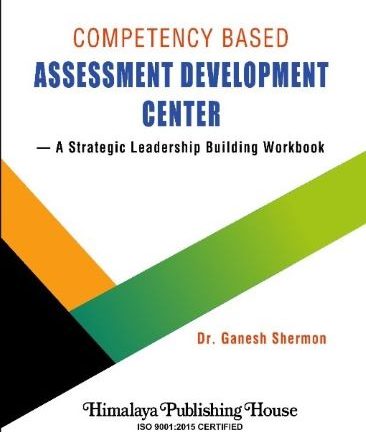
Filled with practical tools, techniques, and simulations, this book under review, authored by renowned global management thinker and thought leader Dr. Ganesh Shermon, equips readers with the knowledge and skills needed to navigate the complexities of modern HR management. It reflects not only the evolution of HR practices but also the ongoing transformation of organisational structures and cultures in the digital era.
The inception of this book on competencies is rooted in our extensive experience across various industries. We have witnessed diverse interventions aimed at understanding and nurturing capabilities within organisations, prompting us to consolidate the remarkable work of academics, consultants, and business professionals. This book serves as a bridge, connection competencies, business imperatives, and human resource functions, addressing the myriad challenges faced by organisations in today’s dynamic landscape.
It covers a wide spectrum, delving into competence mapping processes, work plans, integration with HR processes, and the establishment of assessment and development centers. It is laden with tools, techniques, illustrations, and case studies, serving as a practical guide for readers involved in developing and implementing competency-based human resource management practices.
Also read – Culture: Foundation of Great Legacies : Tusharika Singh
Divided into two parts, the book endeavours to address multifaceted challenges. The first part offers conceptual insights and case-based analyses on assessments centers, while the second part provides a toolkit comprising simulations, psychometric tests, surveys, and feedback mechanisms covering an array of competencies outlined in the main text.
The initial chapter of the book delves into the critical preparations necessary for organisational advancement, focusing extensively on competencies, assessment and development centers, and the strategic business case for assessments. It emphasizes the crucial roles of succession planning, principles behind competency building, and the processes involved in mapping and developing competencies.
Chapters 2 and 3 delve into the intricate world of Assessment Centers, training their history, exploring theoretical frameworks, and highlighting the pivotal role of corporations like AT&T in their development. These chapters also discuss the integration of technologies, diversity, and inclusion considerations in the construction of assessment centers. Talent assessment, as envisaged, will predominantly be overseen by business leaders.
This chapter also lays an emphasis on potential succession assessments. Potential assessments and appraisals play pivotal roles in organisational development and talent management, serving as crucial processes for identifying and nurturing talent, ensuring employee growth, and aligning individual performance with organisational goals.
Chapter 4 delves into focused and detailed examination of the Implications of Competencies and Psychometric Testing within the Competency Model and Assessment Centers, aiming to guide readers through the intricacies of the mapping process. Psychometric tests serve as standardized measures of mental performance, offering insights into various aspects of cognitive ability.
Chapter 5 delves into Development Centers and Managerial Evaluations, providing insights into competency-driven training, development management, and the utilization of Development Centers in business organisations.
Chapter 6 provides an exhaustive review of trending research and developments related to competencies, assessment and development centers, and their end uses.
Chapter 7 serves as a comprehensive tool book, offering a wide range of resources including a competency dictionary, simulations for various scenarios such as in-basket exercises, case studies, role plays, group discussions, and psychometric tests.
The book integrates various business drivers for creating a competency-bases organisation, emphasizing the importance of aligning HR processes with technology and establishing Assessment and Development Centers. Special thanks to Emerald Publications for their valuable research reviews.
Readers are encouraged to self-administer tests and address issues identified within HR sub-processes, facilitating the transformation into a Competency-Bases Assessment Process. This practical approach ensures that the principles outlined in this book can be effectively implemented to drive organisational success.
Competency-Based Assessment and Development Center (CBADCs) are instrumental in bridging the gap between employees’ current capabilities and organisational needs. These centers offer a structured, objective approach to evaluating competencies, focusing on the essential skills, behaviors, and attributes required for optional job performance and career progression. By aligning assessments with organisational goals, CBADCs not only address immediate workforce demands but also prepare employees for future challenges.
CBADCs promote transparency in talent management by helping identify high-potential employees and succession planning candidates. They also support precise learning and development interventions, ensuring that resources are allocated to areas where they can have the greatest impact on organisational success.
This comprehensive 700-page book is a valuable resource for academics, doctoral student, consultants, and practitioners. It provides contemporary, evidence-based insights into CBADCs, covering the integration of psychometric tests, succession assessment managerial evaluations, and AI-driven practices. Future trends, developments, and over 150 pages of customized tools for conducting detailed assessment centers are also extensively addressed.
Stay connected with us on social media platforms for instant updates click here to join our LinkedIn, Twitter & Facebook









